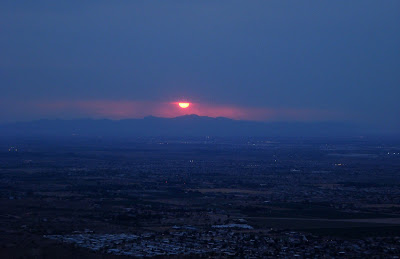Ground reference manoeuvres
We've just returned, hot and sweaty, from lesson nine of ninety-four. Things are starting to fall into place and while my flight was very far from perfect, I didn't make any big errors today and held my altitude a lot better. Normally I throw in a few clangers, such as talking on the wrong frequency which is very confusing for the recipient or having a blank brain moment half way through a checklist or even forgetting to level off at the top of a climb.Today's lesson was an interesting one. Called 'ground reference manoeuvres,' it is a requirement of the American authorities and not something that I recognise from UK training.
It sounds simple — just fly a series of basic manoeuvres; turns around a point, tracking around a square and S-turns across a line. The challenge is to fly them accurately with reference to ground features. This brings two difficulties.
Firstly, the exercise is flown fairly low so our ham-fisted wandering around the sky, almost unnoticeable at height, suddenly becomes very obvious. The second is the biggie — understanding the wind. The wind complicates flying enormously and can take quite a while to get your head around.
Unlike a car, an aeroplane has no attachment to the ground and doesn't give a hoot about where it is or what is underneath it. It flies relative to the surrounding air only. Invariably the air is moving; in other words there is a wind blowing.
Normally, you think of the wind as blowing against you; you can feel its force pushing you around. But that's a a ground-based way of looking at things. An aeroplane does not feel the wind, is simply moves with it just as a balloon or a cloud does. From a few seconds after take off until touch down, the wind (if constant) has absolutely no effect on the way the aeroplane flies.
If you didn't look down at the ground you would never know the wind was there. Even the instruments are of limited help. The compass will tell you which way you are pointing, but is not the way you are going, not if there is any wind. Similarly, the air speed indicator tells you how fast you are flying through the air, but your speed over the ground might be quite different.
 |
| Top: what happens if you ignore the wind (bad) Bottom: getting the right correction angle (good) |
The answer is to point the aeroplane slightly into the wind, so the nose is a little to the left of where you actually want to go. The aeroplane will appear to people on the ground to be skidding sideways, but this is an illusion; it is flying straight through the air, but the air itself is moving.
Get this 'wind correction angle' just right, and your slow progress to the left will exactly cancel the right drift from the wind and you get to your buddy's airstrip by the most direct route. The correction angle depends on the wind speed, air speed and the track on the ground you want to fly. Not easy to do in your head — for longer trips pilots will calculate it in advance using a 'navigation computer', which sounds posh but is actually is a couple of bits of plastic nailed together in the middle. I won't bore you by explaining how it works; here is a guide.
Wind affects speed as well as direction; if the wind is behind you rather than from the side, your ground speed will be faster than your airspeed, and visa versa.
 |
| How wind can ruin a good turn (FAA Flying Handbook) |
To counteract this, when turning into wind we must use less bank for a more gradual turn because our ground speed is low, and steep bank when flying downwind to compensate for the high ground speed.
I hope you can see there is more to flying around a square field than first meets the eye! So how did it go? Judge for yourself.
We arrive at the top left of the picture, and I first attempt a one-mile circle around the spot marked in blue. Then I attempt to fly twice around the set of fields marked in blue again keeping one mile away. Finally I am trying to fly S-turns over the road in the middle, aiming to cross it at 90 degrees each time.
I have jury-rigged an old phone as a GPS logger and it does jitter around a bit, I wasn't wobbling around quite that badly as the image suggests, but I concede there is room for improvement! I should point out the wind was very light making the exercise much easier that it should have been.
After landing, we had a chuckle when ground control told an Airbus A320 to hold and wait for us, rather than the other way around. I was a little worried we would get sucked into the engines as we trundled past the monster in our little spam can.
Next week we are starting some basic instrument work — how to fly a plane without looking out of the window! I suspect the poor old brain is going to be hurting again.
Some pretty pictures especially for fellow cloud spotters
 |
| Intense downburst from a towering cu-nim (in English; a rain cloud) |
 |
| Arizona can be relied on for dramatic sunsets |
 |
| A rainbow over the Rainbow Valley practice area |
 |
| And just to prove I'm not making all this up! |










